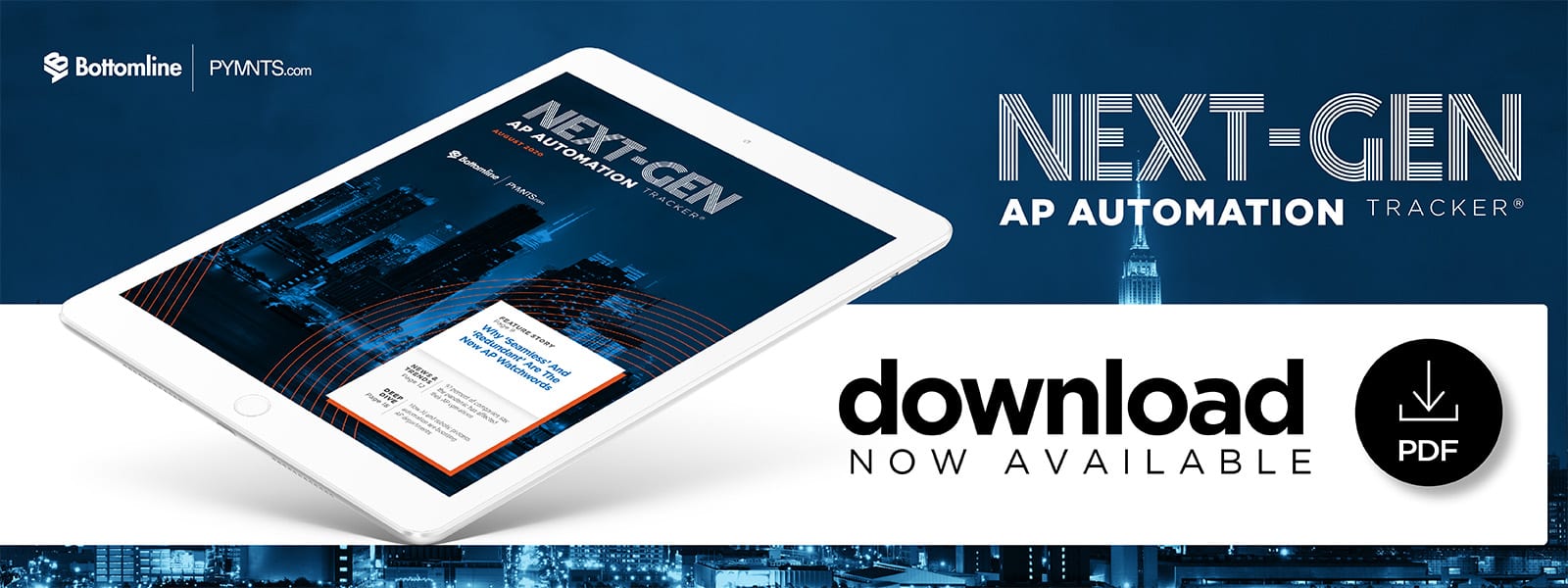Deep Dive: How AI And Robotic Process Automation Push AP Into The Fast Lane

Legacy AP processes can be costly and cumbersome, and many businesses are finding that they can no longer deal with such frictions. Old-school processes’ strains are hitting firms harder than ever as economic difficulties slash budgets and encourage companies to more efficiently use employees’ time. These pressures could prompt many businesses to forge ahead with the AP automation updates they have considered implementing.
Companies have recently become more cognizant of and interested in integrating tools like RPA and AI as they aim to make their AP departments more agile, precise and cost-effective. Twenty-seven percent of businesses had already adopted some form of AP automation by early 2019, according to PYMNTS research. Even holdouts have been eyeing opportunities, as 74 percent of companies in the same study said they intended to make such updates within the next three years. Recent financial strains are likely to encourage AP departments to accelerate their innovation efforts, and this Deep Dive examines how AP departments are leveraging RPA and AI tools to improve their operations.
Hands-Off Processing
Businesses have long wrestled with the frictions inherent in manually processing emailed invoices, prompting them to consider revamping their approaches. Manual invoice entry can consume substantial amounts of staffers’ time and lead to simple employee mistakes. This could explain why a 2019 survey of firms that planned to adopt at least four payment innovations found that 81 percent wished to automate their AP processes to cut costs, while 84 percent wanted to invest in AP automation to reduce errors.
Modern AP tools can reduce these staff burdens. Financial departments can adopt solutions that automatically analyze invoices to extract relevant details, verify them and direct payment requests through internal workflows, for example. One account suggests companies that spend roughly $64,500 manually processing 5,000 invoices each month could slash their costs to just $8,850 after significantly automating their processes.
Finance departments that use automation to boost their AP processes’ speed also stand to save money by earning early-payment discounts from their vendors. These incentives can be particularly beneficial during an economic slump.
RPA And AI
Numerous companies seeking to accelerate their AP processes and reduce errors are adopting tools like RPA. This technology, robotic process automation, directs software bots to take over repetitive tasks from employees, allowing the bots to conduct activities through the same user interfaces that human staff use. AP departments are recognizing the value in leveraging RPA in conjunction with AI tools to automatically accept, review and correct errors in vendors’ invoices. This can be a considerable timesaver, especially for companies with suppliers that utilize atypical invoice formatting. Financial staff members may find that vendors are unwilling to change their formatting approaches, yet adopting technologies that can automatically reconfigure invoices spares employees from doing so personally and prevents them from hounding vendors with formatting requests, ultimately fostering warmer supplier relationships.
AP departments can leverage RPA as part of this process to filter through financial employees’ email inboxes and detect and download PDF invoices before automatically summoning AI-powered OCR tools that can identify and extract useful information from the documents. AI-enhanced offerings can better recognize relevant data, even when invoices are organized in nonstandard ways or when the information they contain is unclear. AI capabilities can help the OCR solutions use context to assess whether an ambiguously written character in a scanned PDF should be the letter O or a zero, for example. These tools are often used to reformat invoice details, confirm data accuracy, correct errors and detect whether suppliers have accidentally failed to provide all necessary details. AI-powered OCR can also utilize historic vendor data to detect other issues, such as recognizing whether an invoice has been misnumbered based on previous invoices’ numbers.
RPA technologies re-assume control once OCR tools complete their actions and either email suppliers to request missing invoice details or flow the information into AP systems so employees can approve the payments. Approaches that combine AI and RPA tools let AP staff members remove themselves from the most repetitive aspects of invoice handling, allowing them to act only when human judgment is required to authorize payments.
Businesses seeking to maximize their budgets and maintain smooth operations during the pandemic could bolster their AP approaches with technologies that help trim costs and free staff from repetitive tasks. RPA and AI-powered OCR are therefore emerging as two powerful tools that can assist companies on their AP modernization journeys.
